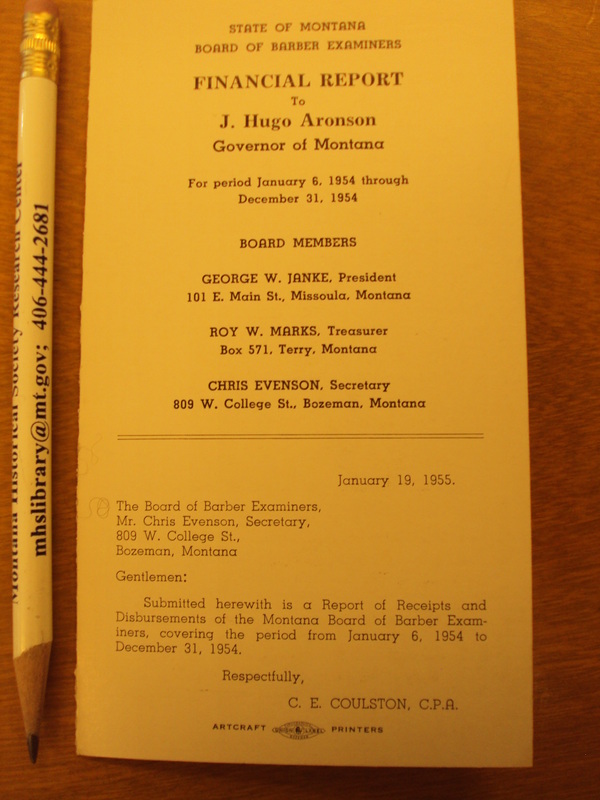Wow, have I lost my marbles?
Alright, alright…the truth is I’m cleaning out my folder and getting some old posts up, some half-starts done, and some things that might be better left unturned, well…turned.
That includes this post. Plus, we looked at old Montana campaign flyers before.
Today, take a look at this mailing envelope for Joseph Brooks:
I have to admit I have no idea who Brooks was, but he had a good envelope.
I think that “Nothing but the truth” line might appeal to some folks, especially after a Watergate-like fiasco.
People like to hold their politicians accountable, and maybe that’s why we see campaign literature like this:
That’s a brochure showing…well, maybe that’s a Barber Examiner’s report. I have no idea what that is.
Here, take a look at this one:
I think this is a good flyer as it tells you who to vote for, does so in big letters, and makes it clear who some other guys to vote for are.
I’m not sure what year this was, but a good guess is 1954. I say that because Murray, who was in the Senate for 25 years and that was the last year he ran.
Anderson ran as well, but lost. He and Fjare were going for the open seat vacated by D’Ewart as he tried to jump to the Senate. The race for the open seat was close, but Anderson lost, 49.3% to 50.6%, a difference of 1,608 votes. He won it by 2,641 votes two years later.
Montana's LeRoy Anderson
 LeRoy Anderson, 1959
LeRoy Anderson, 1959
Anderson always had a head for math, and enrolled in Montana State College, finishing in 1927 and then turning right around to do graduate work in math and chemistry at the California Institute of Technology.
He finished up with that in 1938 and then came back to Montana to get into the cattle business as a rancher. When the war broke out Anderson became a commander of an armored task force in Europe and saw action all over.
He got his start on the continent with the D-Day invasions at Normandy in 1944 and went right on through to the taking of Berlin in 1945.
Anderson was heavily decorated for his actions in the war, getting the Silver Star and Croix de Guerre Medal with Palm, something given by the French to foreign officers that have engaged in “heroic deeds in combat.”
The war over, Anderson headed back to Montana, though he remained with the Army Reserves. He also got into politics, running for the Montana House of Representatives in 1946.
He served a single term before jumping to the Montana Senate in 1948. He’d rise to floor leader by 1954, the same year he ran against Orvin Fjare for the first time for the U.S. House.
He lost that race by a small margin but was allowed a rematch two years later. Anderson took 76,805 votes to Fjare’s 74,164 votes, or 50.9% to 49.1%, a difference of 2,641 votes.
“Democrat LeRoy Anderson took over during 1957-61, partly because of the unpopularity of President Eisenhower’s farm policy,” historian Michael Malone tells us in Montana: A History of Two Centuries, “and because of delays starting construction of Yellowtail Dam.”
In 1958 Anderson ran unopposed in the primary and met Republican Ashton Jones in the general. The race wasn’t even close, with Anderson taking 61% to Jones’s 39%.
It was quite the convincing victory, enough so that Anderson chose to go after the open U.S. Senate seat that James E. Murray was vacating in 1960.
It was a crowded four-man primary and in the end Anderson came in third with 20%. Ahead of him was John W. Bonner with 26% and Lee Metcalf with 35%.
LeRoy Anderson’s time in Washington was done. He picked up engineering work and even got back into the Montana Senate, serving again from 1966 to 1970.
He headed back to Conrad after that, where he died on September 25, 1991. He was 85 years old
If you’d like to read more about our former politicians, check out my book Feds and Farmers.





